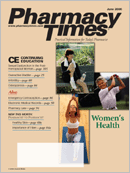Publication
Article
Pharmacy Times
A Pharmacist's Guide to OTC Therapy: Sunburn Treatments
During the summer months, many consumers will seek assistance in selecting the appropriate treatment for various degrees of sunburn. Sunburn occurs when the skin becomes inflamed as a result of excess exposure to ultraviolet (UV) radiation.1
Symptoms of Sunburn
The symptoms of sunburn can be classified as mild, moderate, or severe depending on several factors, including the following2:
- The skin complexion of an individual (fair-skinned complexion has the highest risk of burning)
- The time of day, duration, and altitude of exposure to the sun
- Certain medications or chemicals in some skin preparations can make an individual more susceptible to sunburn if proper precautions are not taken.
The first signs of sunburn may not appear for up to 4 hours after exposure and may peak between 12 and 24 hours following exposure.1 Mild-to-moderate sunburn typically presents with symptoms that can include red erythematous skin, tenderness, pain, and peeling of skin. Severe reactions can occur as well and can cause the development of blisters and sometimes fever, chills, and weakness. In these instances, the individual should always be referred to a physician for further evaluation.1
Treatment
The goals in treating sunburn include addressing adequate pain relief, healing, and overall skin protection to minimize skin irritation and prevent further complications such as infections. Selection of treatment depends on the severity of the sunburn. In general, minor sunburn is initially treated with the use of cool cloths or compresses to affected areas; taking cool showers or baths; or applying topical agents, such as aloe vera, various skin protectants, or topical hydrocortisone to the affected areas. Topical hydrocortisone should never be applied to an area of open blisters. In addition, sometimes utilizing oral OTC analgesics may be deemed appropriate for some individuals. The use of various systemic nonsteroidal anti-inflammatory drugs has been shown to decrease inflammation caused by exposure to UV radiation.1
Role of the Pharmacist
While the majority of mild sunburn cases can be self-treated, it is imperative that patients clearly understand when not to attempt self-treatment and when to seek medical attention, as well as to understand how to appropriately utilize these products. In addition to guiding patients with regard to product selection (Table), pharmacists can play a pivotal role in counseling patients on the means of avoiding future incidences of sunburn or other sun-related complications and reiterate the importance of protecting the skin when exposed to the sun. Pharmacists can also aid patients by reviewing medication profiles and ensuring that patients taking pharmacologic agents that may cause photosensitivity are informed to take precautionary measures, such as avoiding sun exposure during peak hours, limiting amount of sun exposure, using sunscreen, and wearing protective gear, such as hats and sunglasses, to reduce the incidence of sunburn.
Ms. Terrie is a clinical pharmacy writer based in Haymarket, Va.
For a list of references, send a stamped, self-addressed envelope to: References Department, Attn. A. Stahl, Pharmacy Times, 241 Forsgate Drive, Jamesburg, NJ 08831; or send an e-mail request to: [email protected].







